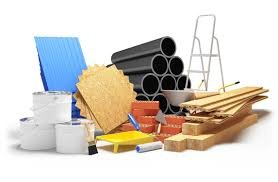Introduction
While making a daily living or focusing on business decisions, more and more people are paying attention to the environmental impact of things in their surroundings. Certainly, this is a topic being discussed widely and is particularly coming to light, especially in the industrial and construction area.
The purpose is, the construction industry is traditionally considered to have harsh impacts on the environment and natural resources. It is because it mainly focuses on demolition along with renovation, manufacture, maintenance, etc.
Moreover, various building materials are being introduced in the marketplace that is eco-friendly. They are being used to focus on decreasing the negative environmental effect of non-beneficial building materials. Visit the website Ambient for more information.
List Of Some Eco-Friendly Building Materials
However, it’s a bit complicated to find out which building materials are mostly used for their eco-friendly abilities, sustainability, and is dependable. Some of the most used eco-friendly materials used worldwide for construction are:
- Bamboo
- Recycled Steel
- Sheep’s Wool
- Straw Bales
- Precast Concrete
- Earthen Materials
- Plant-Based Polyurethane Rigid Foam
- Cork
- Reclaimed Wood
- Cordwood, etc.
Benefits Of Using Eco-Friendly Building Materials For Construction
A manager of construction and building at the World Resources Institute, Eric Mackres describes, ‘The things that do not travel far, are easily available locally in the construction market are somewhat considered as eco-friendly.’ He further said in an interview, ‘Another definition of eco is the things or materials that embody energy.’ This means that the material that is obvious but also has hidden factors in it which also includes time for growth, production, and transportation as they are natural items.
Furthermore, it is considered that eco-friendly and sustainable materials are taken into consideration because they do well in certain climates when used. For instance, most materials are considered to hold well in cool environments and arid climates, whereas the same materials might fail to do well in hot weather conditions. In addition to that, some materials show sustainability in overall weather conditions and are generally eco-friendly.
With that in mind, it is significant to know that no material is perfect for all kinds of demand or types. Nonetheless, some are taken into consideration because they are more sustainable than others. There are also many materials that share the same and common characteristics of materials that include low embodied energy. This means those materials are generally well-known for being lightweight and locally sourced in the marketplace.
In short, all eco-friendly building materials mainly focus on increasing energy efficiency and decreasing the consumption of energy. Moreover, most of them are produced and grown locally to also reduce the energy that is used for transportation due to aesthetic purposes. For example, the material, timber, is collected from sustainable forests for construction.
It is also considered that places built with the materials that collected locally do and blend well with the surrounding nature and environment.








